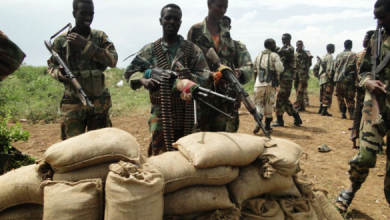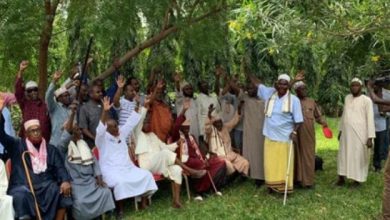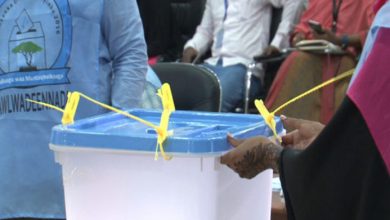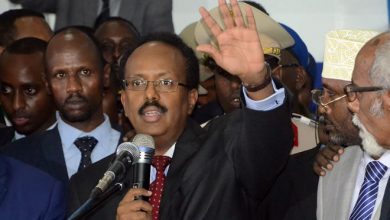Local approval for refugee resettlement sparks heated debate in Minnesota counties
Local officials thrust into national issue after Trump order requiring local OK of resettlement.
Counties across Minnesota are scrambling to decide on whether to welcome refugees after President Donald Trump issued an executive order that requires local approval of any resettlement in their communities.
The measure is sparking tense discussion, confusion and some frustration among many local officials who find themselves thrust into a national issue — and needing to make a decision by the end of January.
“This is a position, from my perspective, that local governments should never be placed in,” Kandiyohi County Board Member Harlan Madsen said.
Commissioners in that western Minnesota county voted 3-2 on Tuesday to accept refugees after heated debate. Madsen said he felt he could not vote “no” because it would send a negative message and would not represent the commitment of county citizens to accepting and embracing the changes taking place. Willmar, the largest city in Kandiyohi County, has close to 3,100 foreign-born citizens out of an overall population of 19,673; it’s in a congressional district that backed Trump by more than 30 percentage points.
Trump issued the executive order in September. Supporters cheered when he mentioned the policy requiring written consent at an October rally in Minneapolis.
“As you know, for many years, leaders in Washington brought large numbers of refugees to your state from Somalia without considering the impact on schools and communities and taxpayers. … You should be able to decide what is best for your own cities and for your own neighborhoods,” Trump told the crowd at Target Center.
Resettlement agencies must submit their placement strategies to the U.S. Department of State by the end of January, based on the letters of consent they receive. Those decisions take effect June 1. If local jurisdictions do not take action, refugees may not be placed there. But the law only applies to the initial settlement of refugees; those who have already settled in the U.S. can still move anywhere they wish.
Matt Hilgart said the issue wasn’t on the radar of the Association of Minnesota Counties until the week of Thanksgiving.
“There’s a lot of nervousness and anxiety, because this issue can be extremely political in communities, and it seems like there’s a very short timeline for this decision to be made,” said Hilgart, the association’s government relations manager.
County boards may have just a few meetings left before the deadline, he noted, and the association has received many inquiries in the last few days. The organization will address the issue Monday in St. Cloud during its annual conference.
Ben Walen, director of refugee services at the Minnesota Council of Churches, said it seemed like county governments were “being put in a political bind.” The council is one of the state’s five refugee resettlement organizations. Those agencies are splitting up the work of soliciting letters of consent from about two dozen of Minnesota’s 87 counties that have a recent record of resettling refugees.
Local decisions
Kandiyohi County Board Chairman Roland Nissen saw the refugee resettlement item on the board’s agenda the day before Thanksgiving. Over the holiday weekend, a notice was printed in the local newspaper, prompting many questions from constituents. He was concerned about the rush and wanted to wait a few more weeks.
“I said, ‘We can’t postpone it then,’ because people are going to show up and they’re going to want to hear what’s going on, but I wish we had because there was a lot of information that I would have liked to have gathered,” Nissen said.
He wanted more time, he added, to learn about the impact on the health care and education systems and how much refugee resettlement was costing taxpayers. But Nissen stressed that his vote against the measure was not based on racial exclusion. Evoking civil rights leader Martin Luther King Jr., he said, “I see people not by the color of their skin but by the content of their character, and I try to be warm and friendly to everyone.”
Gov. Tim Walz, a DFLer who has spoken out against Trump’s immigration policies, plans to submit a letter consenting to refugees being resettled in Minnesota. North Dakota Gov. Doug Burgum, a Republican in a state with high presidential approval ratings, also recently gave approval for refugee resettlement as long as local governments consented.
Commissioners and administrators in Hennepin County, the state’s largest, plan to hold internal conversations on the issue next week. A spokesman for Ramsey County said commissioners are expected to vote in January for continued refugee resettlement.
Refugee resettlement has been a point of controversy in St. Cloud, where a growing Somali population has prompted some residents to protest changes to the mostly white and politically conservative city. But Stearns County, home to St. Cloud, has yet to act on the executive order. County Board Chairman Joe Perske said it isn’t yet on the agenda.
“I was kind of overwhelmed by the fact that we’re going to be allowing the counties to make that type of decision,” Perske said. “And I had no idea it was going to be happening here so quickly.”
He noted that there had been great concern about refugees on the St. Cloud City Council, “but we have not really been approached so much on the county level on the issue.”
City Council Member Paul Brandmire, who has voiced concern that Somali refugees were resettled in St. Cloud too quickly, said Trump’s executive order just reinforced existing federal law that resettlement agencies consult with local officials. And he said the city has been “inundated” with secondary refugees, or those that were initially resettled in one area and later moved to St. Cloud. The new policy doesn’t apply to that group.
He doesn’t think the executive order will change much in St. Cloud.
“Maybe it brings some attention to the way things were supposed to be done,” Brandmire said.
Micaela Schuneman, director of refugee services at the International Institute of Minnesota, said resettlement agencies have always consulted with communities about refugee placements.
“So it’s not completely new to us to have this kind of conversation and consultation with local communities,” Schuneman said. “What is new is this very specific letter requirement.”
She said they want to have all the letters by the end of January, when they apply to the State Department. Bringing in new arrivals is vital to the state’s economic growth, she noted, but it’s also important for families to be together.
“Every time there’s a new hurdle to go through, it’s just more time that families are apart and that people are not being able to start their life in the United States,” Schuneman said.





